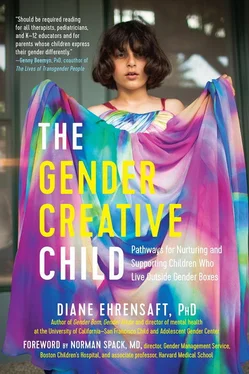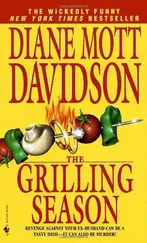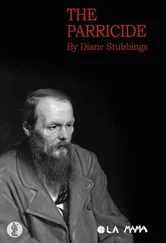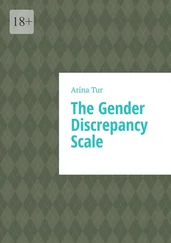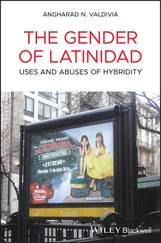CHAPTER ONE
Who Is the Gender Creative Child?
Our genders are as unique as we are. No one’s definition is the same, and compartmentalizing a person as either a boy or a girl based entirely on the appearance of genitalia at birth undercuts our complex life experiences.
—Janet Mock,
Redefining Realness
SOME YEARS AGO, I began to see a little girl in therapy. Stephanie had been grumbling since she was three years old: “I think I might be a boy.” Her parents thought it was just a stage that she’d grow out of. But she didn’t, and for some time she lived as a boy-girl. Then she gradually moved in the direction of boy. Now, Stephanie is Stephen and goes to middle school. It is not always so easy, and some schoolmates who knew Stephen as a girl tease him and tell him he’s not a “real” boy. That hurts his feelings, and his father tells him just to knock them flat, not such a great strategy for the smallest boy in the class. But Stephen marches forth to carve out a space to be the boy that he is now discovering himself to be. I hadn’t seen Stephen for a while, but one day recently we had a check-in appointment. No sooner had we settled in when Stephen pronounced, with great aplomb, “You know, Dr. Ehrensaft, Gender Born, Gender Made was pretty good, but you should write another book. And this time it should be a book about me.”
So, here I am, writing that book, not just about Stephen but about all the children and youth I have gotten to know since I crossed the last t and dotted the last i (virtually) on Gender Born, Gender Made . From the time I wrote Gender Born, Gender Made , so much has happened on the gender front in such a short number of years that I hardly know where to start. But let me try.
Gender-bedrock: two words that have been fused together for centuries in Western culture. Why else would the first question to a pregnant friend be, “Is it a boy or a girl? Do you know yet?” But suddenly in the last decade, the two words have been broken apart. Instead of gender as bedrock, we are now witnessing gender as moving boulders. I live in earthquake country, so I’m always a bit queasy about making references to the earth’s moving under our feet, but I’d have to say that an earthshaking explosion has been happening when it comes to gender. No sooner do we think we have all the new terminology about gender clear in our heads than we discover we were all wrong, and that today’s words are already passé. Moving from geological metaphor to human action, nothing less than a gender revolution is going on, with people taking to the streets to shout out, “No more gender boxes,” and the trans community and its allies mobilizing to push the agenda so succinctly articulated by Janet Mock: “Our genders are as unique as we are.” Who is leading this revolution? Children who are nimbly pushing the boulders around, creating an ever-shifting terrain as we try to grasp “What’s your gender?”
Indeed, a new group of boys, the “pink boys,” have made their voices heard. Actually, pink boys have been around for a long time, but now they have coalesced into a social entity with a message to deliver. Like the traditional tomboy, they wear clothes of the opposite gender but assert themselves as boys—“I like dresses; why shouldn’t I get to wear them just because I’m a boy?” They are getting media attention. Such books as My Princess Boy , Jacob’s New Dress , and Raising My Rainbow [1] Cheryl Kilodavis, My Princess Boy (New York: Aladdin, 2010); Sarah and Ian Hoffman, Jacob’s New Dress (Park Ridge, IL: Albert Whitman, 2014); Lori Duron, Raising My Rainbow (New York: Broadway Books, 2013).
are being written about them. Their celebratory gender freedom and people’s uneasy reactions to it lay bare the sexist double standard that more freely allows girls to cross gender lines but stay girls, while policing or even punishing any boy who attempts to do the same. Rather than leaving us in question about their gender, they are demanding just the opposite: “No question. I’m a boy. I like dresses. So, get over it.”
Right after Gender Born, Gender Made was published, a flurry of activity showed up in Toronto, Canada. Two parents, Kathy Witterick and David Stocker, had made the decision to keep private the assigned sex of their five-month-old baby. They then decided to go public with their story. [2] Jayme Poisson, “Parents Keep Child’s Gender Secret,” Toronto Star , May 21, 2011.
The genitals of that child, whose name is Storm, were known by only a select few. The parents did not want cultural pressures to intrude on Storm’s freedom to discover their [3] Part of the gender revolution initiated by the young is the insistence on using gender neutral pronouns, rather than the binary “he/she.” Although we diehard feminists of the 1960s thought we had made great inroads in gender equality by insisting on desisting with the use of “he” to refer to everyone, male or female, and substituting “he or she” to be gender-inclusive, we now find ourselves outmoded. The preferred gender neutral pronoun requested by many of the young people in the community is “they” rather than he or she. Although it sounds discordant and grammatically incorrect by adults schooled in American English, it was pointed out to me by an astute, if not brilliant, self-identified agender patient that Shakespeare’s work is replete with the use of “they” in the singular, as this particular youth was asking to be referred to. “Their” message to me and others: “Get over it.” So, in the spirit of letting our young lead the gender revolution, I will be using the pronoun “they” throughout The Gender Creative Child to refer to a singular gender creative child, unless they have indicated that they would like to be referred to as “he” or “she.” This will be part of my effort in getting over it.
own gender, and they wanted to give the child as much opportunity as possible to explore gender without being boxed into a category. And so we had the Storm about Storm. Within twenty-four hours the story, first published in the Toronto Star , went viral, with a flood of social media commentary mounting into the hundreds of thousands. And the majority of those comments were vitriolic in their condemnation of Storm’s parents—they’re turning their child into a freak; they’re using their child for their own political ends; babies are not social experiments; Storm will grow up forever damaged, maybe even deranged. Many people looked at the photo of this blond-haired little baby and said definitively, “Oh, I know it’s a boy. You can tell,” or “Who are they trying to kid? Storm is obviously a girl.” I received requests for comments on Storm from reporters and journalists all over the world. The most common question posed to me was: “If Storm isn’t told what gender Storm is, won’t Storm be confused?” My response: “Not as confused as we are.” It makes us incredibly anxious when someone purposefully removes gender markers. How are we going to get our bearings and classify a person without them? Think about it—it’s almost reflexive for us to scan a room we enter and take note: Who are the men, who are the women? And so, as bedrock crumbles and moving boulders rumble, it will be a challenge for all of us to unmoor ourselves from the constrictive and restrictive confines of gender-binary assumptive assuredness.
As I wrote Gender Born, Gender Made , I had an inkling that a sea change in gender was occurring, but I had no idea that in such a short time it would hit land and rock the earth as it has—at home, in our communities, in our society, and across the globe. In February 2014 Facebook changed its US profile options for gender, extending it from two to fifty categories, including transgender, cisgender, agender, gender fluid, intersex, neither, trans female, trans male, trans person, gender variant, gender questioning, bigender, androgynous, pangender, and transsexual. People creating a profile can choose as many categories as they want. In 2012 California passed legislation prohibiting mental health practitioners from engaging in practices that attempted to change a minor’s gender behaviors (State Assembly Bill 1172). New Jersey soon followed suit, along with the District of Columbia, and as I sit here writing, fifteen other states have similar bills pending. Looking north across the border, Ontario passed a no-reparative-therapy bill in 2015, in the same year that President Obama and the White House issued a statement condemning the practice of reparative therapy. In 2013 California passed another piece of legislation ensuring that all students in public schools are allowed to use the facilities and engage in activities associated with their affirmed gender, rather than their natal sex (State Assembly Bill 1266). In 2013 gender identity disorder was removed from the Diagnostic and Statistical Manual of Mental Disorders , replaced by a more palatable (but still problematic) mental health diagnosis of gender dysphoria. In the fall of 2011, the World Professional Association of Transgender Health (WPATH) released its new standards of care, which state explicitly that it is unethical and harmful to engage in any form of therapy that attempts to change one’s gender. The American Psychological Association followed suit and released a large volume of new guidelines for gender-supportive care. New gender clinics have begun to pop up across the United States and beyond, to aid children in affirming their authentic gender. The “gender affirmative” approach has emerged and has become an ascending international model for supporting children and youth’s gender health, an effort that I am proud to be a part of. Simultaneously, therapeutic models aimed at altering children’s gender to conform to cultural norms or influencing children to accept the gender that matches the sex on their birth certificate have been challenged, declared unethical, and evaluated as harmful to children’s well-being. In 2007 Barbara Walters produced a 20/20 documentary on transgender kids. It was the first of its kind in TV broadcasts and a transformative turn of events in media history—with transgender children and their families from cities and small towns all over the United States (not just Berkeley, California) portrayed in a positive and empathic light. As I write this in 2015 it seems that a week does not go by without a new media account of gender-nonconforming or transgender children. I could go on, but suffice it to say that as these changes have rolled out in such a short band of time, we gender specialists, in partnership with the families who are raising the children, can hardly keep up. Every day we learn more and see how much more we have to learn about helping our children discover and fortify their true gender selves.
Читать дальше
